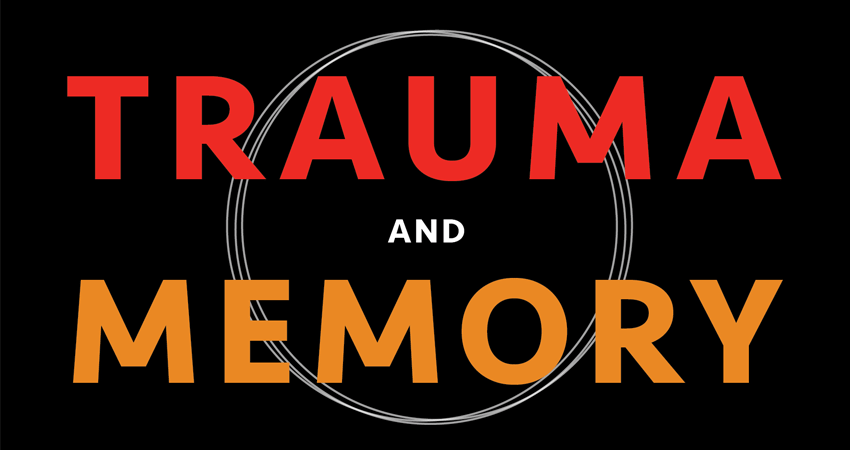
The Tyranny of the Past
Categories: Bodywork & Somatics Excerpt Psychology & Personal Growth
Excerpt from Trauma and Memory by Dr. Peter A. Levine
In his newest book Trauma and Memory, Dr. Peter Levine (creator of the Somatic Experiencing approach) tackles one of the most difficult and controversial questions of PTSD/trauma therapy: Can we trust our memories?
Building on his 45 years of successful treatment of trauma, Dr. Levine acknowledges that memory can be trusted, but he argues that the only truly useful memories are those that might initially seem to be the least reliable.
Throughout the ages people have been tormented by memories that have filled them with fright and horror, with feelings of helplessness, rage, hatred, and revenge, and with a plaguing sense of irreparable loss. In ancient literature, such as the epic tragedies of the Greeks, Sumerians, and Egyptians, as well as in hundreds of contemporary books on trauma, nightly newscasts, and celebrity confessionals, trauma has been and continues to be at the epicenter of human experience.
Despite the seemingly boundless human predilection to inflict suffering and trauma on others, we are also capable of surviving, adapting to, and eventually transforming traumatic experiences. Seasoned therapists utilize this innate capacity for resilience and healing to support their work with those suffering from the aftermath of life-threatening and overwhelming events. These incidents include (but are by no means limited to) war, assault, molestation, abuse, accidents, invasive medical procedures, natural disasters, and witnessing a serious injury or sudden death of a loved one. All of these “shocks” to the organism can alter a person’s biological, psychological, and social equilibrium to such a degree that the memory of one particular event comes to taint, and dominate, all other experiences, spoiling an appreciation of the present moment. The resulting tyranny of the past interferes with the ability to focus effectively on both new and familiar situations. When people pay selective attention to the riveting reminders of their past, sleep becomes the enemy and life becomes colorless.
Perhaps nowhere in the field of trauma is there more confusion than with the role of traumatic memory in both pathology and healing. Indeed, research studies conducted by different laboratories frequently appear to contradict one another. In addition, clinicians and academics rarely communicate with each other—a very unfortunate state of affairs. Most importantly, traumatic memory differs fundamentally from other types of memory, creating the potential for great confusion and the misapplication of therapeutic techniques.
Most contemporary psychotherapies live in the long shadow cast by Freud and his descendants, or have been guided by various cognitive behavioral approaches. However, these avenues of alleviating human suffering are of limited value in work with trauma and its underlying memory imprints. While both of these therapeutic traditions do address certain dysfunctions related to trauma, they are unable to reach its primal core. They do not sufficiently address the essential body and brain mechanisms that are impacted by trauma. Alas, this leaves the most basic human need and drive for healing largely unmet.
Trauma shocks the brain, stuns the mind, and freezes the body. It overwhelms its unfortunate victims and hurls them adrift in a raging sea of torment, helplessness, and despair. For a therapist, to witness such desperation in one’s clients is to feel a compelling call to effectively relieve such suffering. Increasingly, therapists are being drawn to work with traumatic memories as various techniques (and their offshoots) are becoming widely known, taught, and practiced. These various approaches have arrived on the scene in this approximate chronological order: mesmerism, hypnosis, analysis, exposure, Somatic Experiencing (SE), eye movement desensitization reprocessing (EMDR), and various “energy psychologies” (e.g., point tapping).
Many psychodynamic therapists understand that they must work with how their patients’ pasts play out in the present. In this way they attempt to help them secure a better, healthier, more focused, effective, and vibrant future. However, without a working understanding of how trauma becomes inscribed as memory imprints in body, brain, and mind, as well as in psyche and soul, the healer is sure to lose his or her way in the labyrinth of cause and effect. For effective therapy, it is critical to appreciate just how trauma becomes riveted in the body’s instinctive reactions to perceived threat; how it becomes fixated in certain emotions, particularly those of fear, terror, and rage, as well as in habitual affective mood states such as depression, bipolarity, and loss of vital energy; and finally, how it plays out in various self-destructive and repetitive behaviors.

Without a firm grasp of the multidimensional structure of traumatic memory as it is stored in the brain and held in the body, the therapist is often left floundering in the swamplands of ambiguity and uncertainty. Indeed, misconceptions about so-called recovered memories have caused much unnecessary pain and suffering for patients and for their families, while also creating confusion and self-doubt for the therapists who treat them.
Perhaps more than we might wish to admit, many therapists are influenced by common misconceptions about the nature of memory. Traditionally, both academic and clinical psychologists have tended to study what has been called “verbally accessible memory.” This “declarative” form of memory is called upon and rewarded in elementary, middle, and high school, as well as in undergraduate and graduate studies. No small wonder then that psychologists and psychotherapists, as products of academia, tend to reflexively identify with this particular kind of conscious memory. However, conscious, explicit memory is only the proverbial tip of a very deep and mighty iceberg. It barely hints at the submerged strata of primal implicit experience that moves and motivates us in ways that the conscious mind can only begin to imagine. But imagine we should, and understand we must, if we are to work effectively and wisely with trauma and its memory traces in both mind and body.
Excerpted from Trauma and Memory by Dr. Peter A. Levine. © 2015, North Atlantic Books.
Tags: Peter A. Levine Trauma & Anxiety





